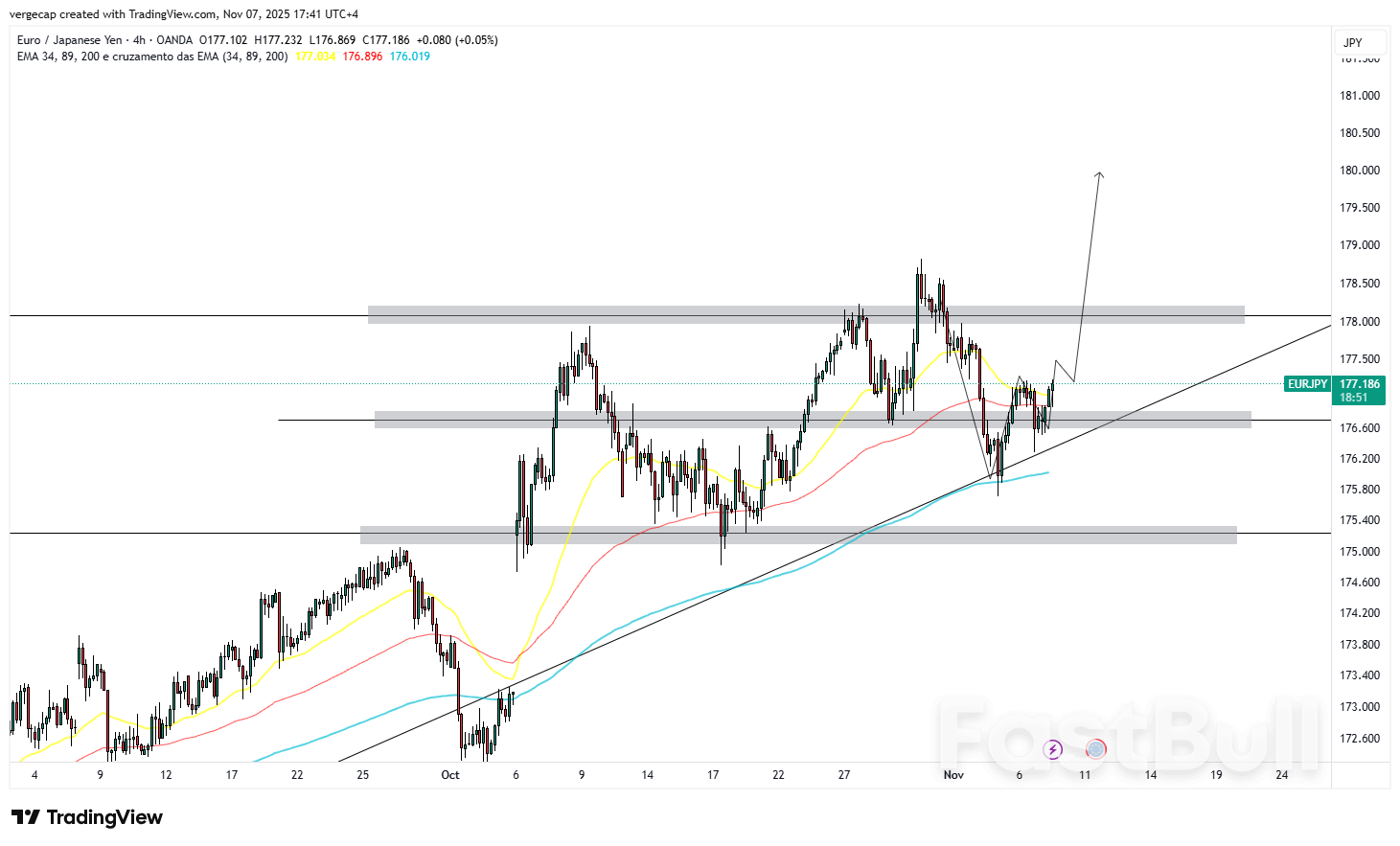The Euro (EUR) traded higher against the Japanese Yen (JPY) on Friday, with EUR/JPY up 0.20% to around 177.10, rebounding from an intraday low near 176.50. The move reflects renewed Yen weakness amid a mild risk-on sentiment in global markets, as traders weigh diverging monetary policy outlooks between the Bank of Japan (BoJ) and the European Central Bank (ECB).
The latest minutes from the BoJ’s September meeting revealed that a growing number of policymakers believe the conditions are aligning for a potential interest rate hike. Two members even called for immediate action—an unusually hawkish tone for a central bank that has kept monetary policy ultra-loose for over a decade. However, the BoJ continues to approach tightening with caution, wary of derailing Japan’s modest economic recovery.
Adding to the complexity, Japan’s new Prime Minister, Sanae Takaichi, has reportedly been preparing an economic support package worth roughly $65 billion. The stimulus plan, aimed at shoring up consumption and business investment, could indirectly delay the BoJ’s tightening cycle as fiscal expansion offsets the need for aggressive monetary action. Takaichi’s pro-stimulus stance contrasts slightly with the BoJ’s measured approach, reinforcing uncertainty about the policy path ahead.
Meanwhile, Japanese officials have signaled increasing concern over rapid currency fluctuations. Finance Minister Satsuki Katayama noted that the government is “monitoring Yen moves with a high sense of urgency,” a phrase that markets often interpret as a warning of potential intervention. The comment highlights Tokyo’s growing unease as the Yen remains under pressure, flirting with multi-decade lows against the Dollar and other major currencies.
In Europe, the ECB continues to maintain a steady, cautious stance after a year of aggressive tightening. President Christine Lagarde reiterated that current policy settings are “in a good place,” emphasizing that the ECB’s priority is to hold rates steady long enough to ensure inflation sustainably converges toward the 2% target. Boris Vujcic, a member of the Governing Council, echoed this sentiment, saying the central bank has “done its job” after bringing price growth close to target.
Market pricing now implies that traders see less than a 50% chance of another rate cut before mid-2026, suggesting that policymakers may keep borrowing costs elevated longer than previously anticipated. The ECB’s stance contrasts sharply with the BoJ’s, which still maintains negative real rates, reinforcing the widening interest rate differential that continues to support the Euro against the Yen.
However, the broader Eurozone economic picture remains uneven. The latest data from Germany—the bloc’s largest economy—highlighted the ongoing fragility of its recovery. German retail sales unexpectedly fell in September, while the trade surplus narrowed to €15.3 billion, missing expectations of €16.8 billion. The data underscore the headwinds from weaker global demand and domestic spending constraints, limiting the Euro’s upside potential despite the yield advantage.
Economists note that the Eurozone remains caught between slowing industrial activity and persistent inflationary pressures, leaving the ECB with limited room for maneuver. As a result, currency traders may continue favoring the Euro primarily as a yield play rather than on growth fundamentals.
Technical Analysis
The EUR/JPY pair continues to trade with mixed momentum, consolidating near the 177.05 level. The technical setup shows resistance forming at 177.85, where multiple indicators suggest a potential cap on immediate upside momentum. A sustained break above this zone could open the path toward 178.50 and 179.20, but momentum oscillators remain neutral, indicating a possible period of consolidation before any decisive move.
On the downside, initial support lies at 175.80, and a confirmed break below this level would expose further downside targets near 175.15, with a deeper corrective move potentially extending toward 174.45, aligning with the lower boundary of the broader bullish channel.
As long as EUR/JPY holds above the 175.80–176.00 region, the broader bias remains moderately bullish, supported by fundamental divergence between the ECB and BoJ. However, traders should monitor Japanese fiscal policy developments closely, as additional stimulus or currency intervention could trigger sudden volatility in the pair.
TRADE RECOMMENDATION
BUY EURJPY
ENTRY PRICE: 177.200
STOP LOSS: 176.200
TAKE PROFIT: 179.20













